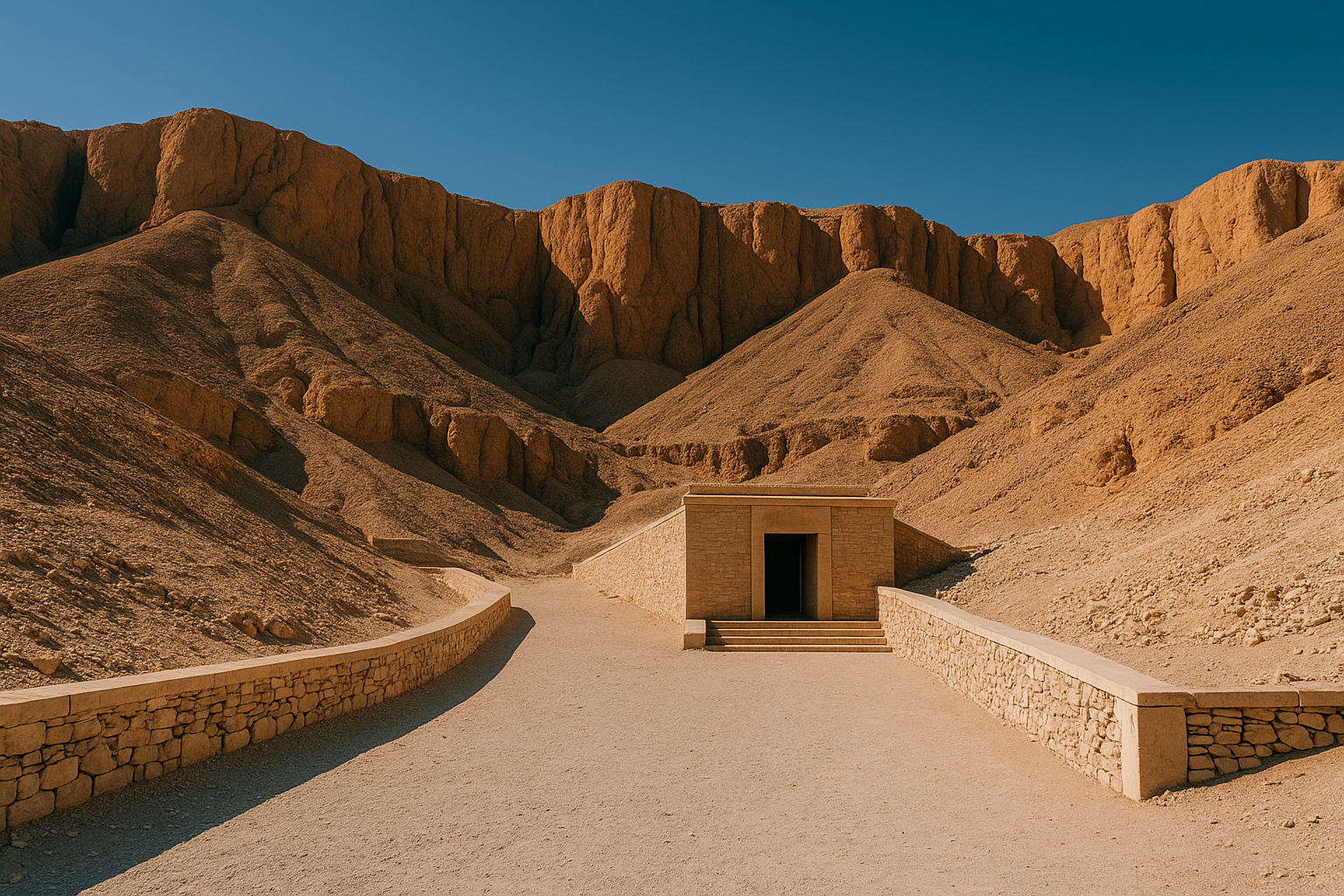While the Valley of the Kings often captures the spotlight, its sister site—the Valley of the Queens—is equally enchanting and rich in history. Located on Luxor’s West Bank, this sacred necropolis served as the final resting place for queens, royal wives, and children of the pharaohs. Known in ancient times as Ta-Set-Neferu, or “The Place of Beauty,” the Valley of the Queens is a site where love, devotion, and artistry converge in one timeless setting.
The History of the Valley of the Queens
The Valley of the Queens was established during the New Kingdom period (1550–1070 BCE). Unlike the kings, who were buried in the more hidden and elaborate Valley of the Kings, queens and royal family members were laid to rest in tombs carved into the cliffs of this nearby valley. More than 90 tombs have been discovered here, though not all are decorated or open to the public.
The valley’s significance lay not only in providing a burial ground but also in symbolizing eternal life for the women and children of Egypt’s most powerful rulers.
The Tomb of Queen Nefertari: The Jewel of the Valley
The most celebrated tomb in the Valley of the Queens belongs to Queen Nefertari, the beloved wife of Ramses II. Her tomb, QV66, is considered one of the greatest masterpieces of ancient Egyptian art.
The walls are adorned with brilliantly preserved paintings depicting Nefertari’s journey through the afterlife, guided by gods such as Isis, Hathor, and Osiris. The vibrant reds, blues, and golds still dazzle visitors today, making it one of the most beautiful and best-preserved tombs in all of Egypt.
Visiting the Tomb of Nefertari is a highlight of any trip to Luxor, and it alone makes the Valley of the Queens worth exploring.
Other Notable Tombs
While Nefertari’s tomb is the crown jewel, there are other fascinating tombs to explore in the Valley of the Queens:
- Tomb of Prince Khaemwaset (QV44): One of Ramses III’s sons, decorated with protective deities.
- Tomb of Queen Tyti (QV52): Believed to be the wife of Ramses III, showcasing colorful depictions of funerary rituals.
- Tomb of Amunherkhepshef (QV55): Another son of Ramses III, his tomb features touching scenes of the young prince with his father.
Each of these tombs offers a glimpse into royal life and beliefs about the afterlife.
Artistry and Symbolism in the Valley of the Queens
The tombs in the Valley of the Queens are celebrated for their exquisite artwork. Unlike the more austere tombs of the kings, these burials often emphasized themes of beauty, motherhood, and divine protection.
Scenes of the queens with gods and goddesses reflect their close connection to the divine, while texts from the Book of the Dead and other funerary guides ensured their safe passage into eternity.
Discovery and Preservation
Like the Valley of the Kings, the Valley of the Queens was known for centuries but only systematically studied in the 19th and 20th centuries. Italian archaeologist Ernesto Schiaparelli famously rediscovered Nefertari’s tomb in 1904, stunning the world with its artistry.
Today, preservation remains a challenge due to tourism and natural factors. Access to Nefertari’s tomb is restricted, with limited tickets each day to protect its fragile paintings. Conservation efforts led by Egyptian authorities and international teams continue to safeguard the beauty of the valley for future generations.
Visiting the Valley of the Queens
A visit to the Valley of the Queens is an unforgettable experience. Less crowded than the Valley of the Kings, it offers a more peaceful atmosphere while still providing extraordinary insights into Egypt’s royal past.
- Best Time to Visit: Early morning or late afternoon for cooler temperatures.
- Tickets: A general entry ticket allows access to several tombs, but the Tomb of Nefertari requires a special ticket.
- Guided Tours: Egyptologists bring the stories of the queens and princes to life, adding depth to the visual splendor.
Plan your trip with:
Final Thoughts: The Place of Beauty Lives On
The Valley of the Queens may be smaller than its counterpart, but its impact is just as profound. From the unmatched artistry of Nefertari’s tomb to the touching depictions of royal children, the site is a celebration of family, love, and divine protection in ancient Egypt.
For travelers seeking to immerse themselves in Egypt’s history, the Valley of the Queens offers an intimate and breathtaking journey into the world of queens, princes, and princesses who once shaped the destiny of an empire.
Start planning your adventure today with www.deltatoursegypt.com and explore the timeless wonders of the Valley of the Queens.


Comment (0)